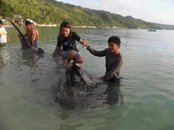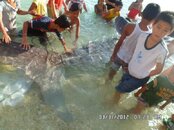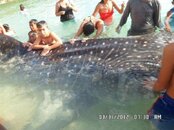DonCebu
Contributor

I figured this would wind up a lot of people by posting his picture I found on Facebook.
Seems like the local fisherman are not making enough from the tours.... they are now allowing rides on the Whale Sharks !
"Only in the Philippine" was a better tourism slogan than "More Fun in the Philippines" !
Seems like the local fisherman are not making enough from the tours.... they are now allowing rides on the Whale Sharks !
"Only in the Philippine" was a better tourism slogan than "More Fun in the Philippines" !











